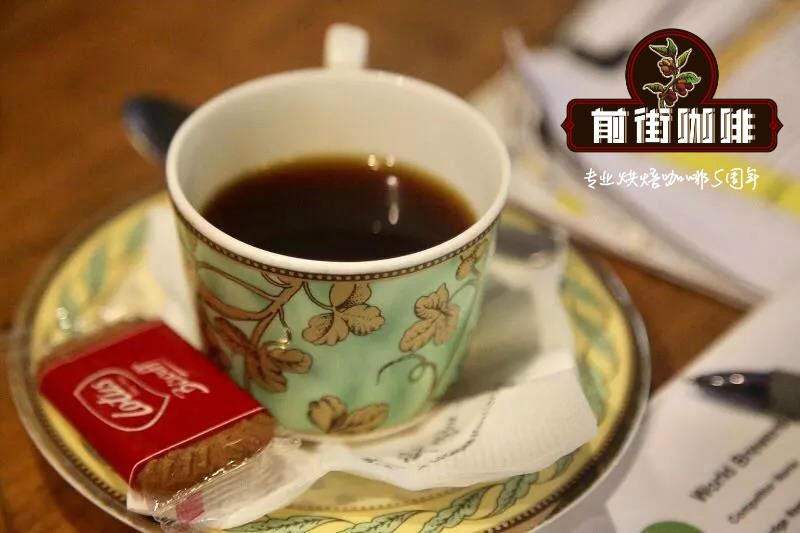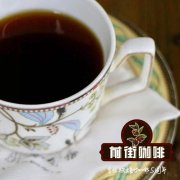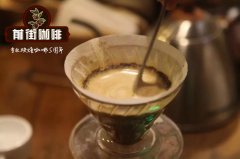The difference between Sanani mocha beans and mocha coffee in Yemen what is the difference between Yemeni mocha coffee

Professional coffee knowledge exchange More coffee bean information Please pay attention to coffee workshop (Weixin Official Accounts cafe_style)
Yemen
Yemen, popularly known as Arabia, is the birthplace of the Arabica species, once popular under the name "mocha coffee," but it is no longer popular. However, its mellow flavor, rich and mellow characteristics, is still quite popular with consumers after dinner coffee. The same coffee from Brazil and Colombia was chosen as the three musketeers of blended coffee. Bani Matar region produced "Matari" and Sanaya region produced "Sanani" are also quite famous.
Coffee World's Last Living Historic Site
Yemeni coffee farmers still produce coffee the same way they did 500 years ago.
Coffee berries grow naturally on trees, without the use of artificial fertilizers or pesticides, and in summer they are watered by a small amount of rain and fog on the slopes, and in dry winter, mature coffee berries are allowed to hang on trees and dry naturally-a very unique and rare practice, because Arabia's extremely dry climate and intense sun allow this, and in other coffee producing areas, the same practice may cause coffee berries to rot on trees.
Ripe or dried coffee berries fall naturally from trees or are shaken or picked. Coffee farmers, who account for nearly a quarter of Yemen's population, sun their pulpy berries on rooftops, in front of huts, or even directly on dirt floors, exposed to harsh, dry winter sun. After the rind and pulp are dried, the beans are ground to remove the dried rind and pulp with an old-fashioned stone mill (two stones stacked one on top of the other).
There are still a few coffee farmers in Yemen who use animals (such as camels and donkeys) as a source of power for stone mills. Compared with Central and South American countries that use advanced machinery to process coffee beans in large quantities, or even neighboring Kenya with a short history of coffee, Yemen mocha is simply the only living monument in the coffee world! You know what? The Yemeni coffee you drink today is basically not much different from the Arabic coffee enjoyed by European aristocratic merchants hundreds of years ago in Venice, Italy, in San Marco Square, the oldest cafe in Europe.
Yemeni coffee is treated entirely in natural sunlight, as opposed to most of the world's coffee-producing washing methods. The stone mill (crushed with two stones) dehulling process causes the broken beans to be mixed, resulting in an untidy appearance. Green beans are often mixed with twigs, pebbles and even dried insects (which are sifted out during baking). It also has some of the world's most unique, rich, fascinating complex smells: "red wine, wild, dried fruit, blueberry, grape, cinnamon, tobacco, sweet spice, log and even chocolate..." You can see all kinds of adjectives being used to describe Yemeni mocha!
Because of the dried pulp, the coffee berry flavor has the opportunity to "penetrate" the coffee beans. When the coffee fruit falls on the dry soil of the African plateau, it will also absorb the smell of the surrounding organic matter, plus the "sun smell" given by the fierce winter sun in Arabia (you can smell similar smell on the sun-dried quilt), the ripe fruit fermentation smell of the natural fermentation of the pulp, and a little earthy taste... 300,000 coffee farms at altitudes ranging from 3000 feet to 8000 feet, and ancient, 100% organic processing methods, create a unique Yemeni mocha.
Among the common Yemeni mocha, Mokha Mattari is most famous. Martali, produced in Bani Matar (also known as Bany Mattar) province, is coffee grown at high altitudes, usually with good red wine aromas, dry fruit flavors, thick taste, deep roast and often chocolate caramel sweetness.
Due to the political instability in Yemen in recent years, production has dropped sharply, and mocha martali, the most famous coffee in the world, has become a target for watering down, and has been mixed with lower-grade inferior beans. Today, even labeling as Madeline is not a guarantee of high quality. Good quality martali beans are small, raw beans have a sweet wine aroma and moderate ripe fruit fermentation flavor, excellent martali performance will never let coffee lovers disappointed!
Mokha San ani is a blend of beans from tens of thousands of small farms on the slopes near the capital San a (Figure 2). It is planted at a lower elevation than Martali, and generally tastes thinner and less acidic than Martali, but has a good fruity flavor, often with better ripe fruit and wild flavors than Martali. According to experience, the quality of Shanna varies greatly, sometimes with flat flavor, earthy smell, fermented taste of inferior products, careful cup test selection is coffee importers must do homework, absolutely not lazy.
Mokha Ismaili is one of the traditional ancient tree species, planted at an altitude of more than 6500 feet, characterized by rounder beans, smaller beans than matali, thick taste, high complexity, and generally, often exceeding matali performance. This is the least produced and most expensive Yemeni mocha (Yemeni mocha is already not cheap). Mocha ismaili of excellent quality is produced in Hirazi district (although famous as Bani Matar, it is the best known growing area in Yemen). The mountain side of Hirazi district has a maximum altitude of 8000 feet!
Mokha Rimi is grown in the Djebel Remi(aka Raimi, Rayma) district and is similar in quality to Shanani. In my experience, Mokha Rimi is usually slightly fermented and occasionally has a surprisingly rich raisin sweetness. When roasted properly, the coffee beans smell like opening a bottle of rich jam.
Mokha Yafeh is produced in Yafeh (also known as Yaffe) province in the south of Yemen. It belongs to the rare Yemeni mocha, which is the only "southern taste" in Yemen. The output is also small. Almost all of them are sold to the neighboring United Arab Emirates. It is rarely seen in the fine coffee market.
A coffee expert once said: "Yemen mocha taste too diverse, not only different origin, different species, different batches have different, each sack, even each cup of flavor is different." Because of its complexity and variety, it is a challenge for coffee roasters to roast the best flavor of Yemeni mocha! Light baked fruit sweet, mild, warm sun fermentation flavor; deep baked to show the rich red wine fragrance, bitter sweet chocolate aftertaste, in the taste of repeated,"lingering, three days in the mouth." No wonder there are so many coffee lovers who list Yemeni mocha as their favorite!
confusing naming
There is no universal standard for naming Yemeni coffee, nor is there an official grading system. Local residents have their own classification system, with hundreds of coffee codes and names for internal classification purposes, but for commercial markets (export use) coffee is not suitable. In the commercial market, Yemeni mocha is usually named in one of two ways: "place name" or "tree name."
Yemen Mokha Mattari and Yemen Mokha Sanani are "origin nomenclature", indicating that they are produced in Bani Matar province and the hillside near the capital San a, respectively; Yemen Mokha Ismaili is "tree species nomenclature", and its production is Hirazi, located southwest of Bani Matar.
Related: What is Mocha Coffee? Yemeni mocha matali sun-baked beans are the real mocha coffee beans of Yemen
Important Notice :
前街咖啡 FrontStreet Coffee has moved to new addredd:
FrontStreet Coffee Address: 315,Donghua East Road,GuangZhou
Tel:020 38364473
- Prev

Yemeni mokamatali coffee beans are boiled and grinded, water temperature and water powder are more than how many grams of powder
Professional coffee knowledge exchange more coffee bean information please follow the coffee workshop (Wechat official account cafe_style) Yemeni Coffee profile: Matari is the top mocha, the most famous national treasure coffee in Yemen! Floral and fruity, aroma rising and elegant, from smelling to sipping all stages full of red wine and high-grade chocolate flavor, quite unforgettable. Production of coffee grown in Yemen
- Next

Why are Yemeni coffee beans called mocha coffee? what does Yemeni mocha have to do with mocha?
Professional coffee knowledge exchange more coffee bean information Please pay attention to the coffee workshop (Wechat official account cafe_style) Yemeni mocha taste characteristics are more prominent, sour taste is obvious, it is easy to taste cocoa, the cocoa concentration emitted increases with the coffee concentration. Naturally, when making coffee, people will add hot cocoa to it.
Related
- Detailed explanation of Jadeite planting Land in Panamanian Jadeite Manor introduction to the grading system of Jadeite competitive bidding, Red bid, Green bid and Rose Summer
- Story of Coffee planting in Brenka region of Costa Rica Stonehenge Manor anaerobic heavy honey treatment of flavor mouth
- What's on the barrel of Blue Mountain Coffee beans?
- Can American coffee also pull flowers? How to use hot American style to pull out a good-looking pattern?
- Can you make a cold extract with coffee beans? What is the right proportion for cold-extracted coffee formula?
- Indonesian PWN Gold Mandrine Coffee Origin Features Flavor How to Chong? Mandolin coffee is American.
- A brief introduction to the flavor characteristics of Brazilian yellow bourbon coffee beans
- What is the effect of different water quality on the flavor of cold-extracted coffee? What kind of water is best for brewing coffee?
- Why do you think of Rose Summer whenever you mention Panamanian coffee?
- Introduction to the characteristics of authentic blue mountain coffee bean producing areas? What is the CIB Coffee Authority in Jamaica?

